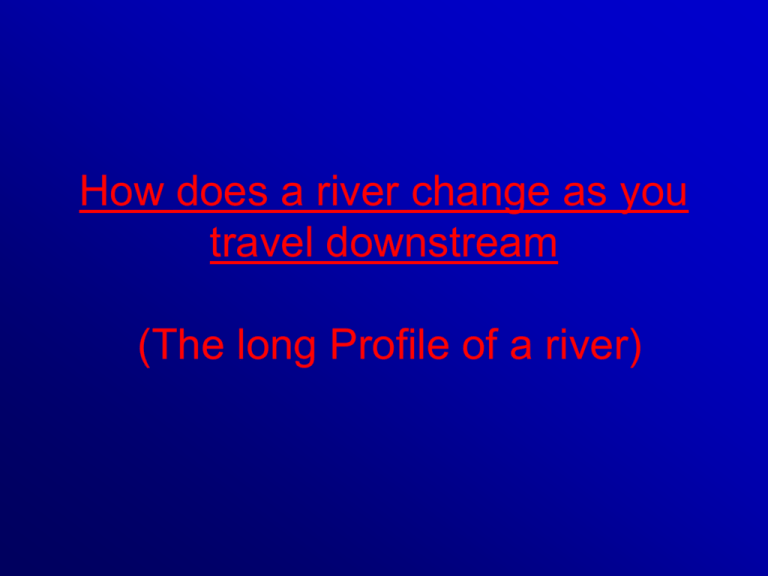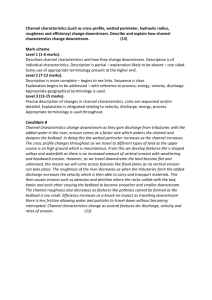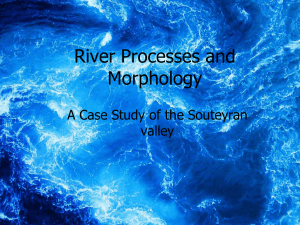How to record the discharge (flow) of a river
advertisement

How does a river change as you travel downstream (The long Profile of a river) A rivers long profile looks something like this: Upper Course Middle Course Lower Course Is it upper, middle or lower? What are the differences between a river in its upper, lower , middle ? Question? How does a river change as you travel downstream? What changes can you think of? Key river terms 1. Load = The amount of material being carried by a river 2. Velocity = the speed of a river in metres per second m/s Key river terms cont… 3. Discharge = is the amount of water passing a given place at a given time Discharge = velocity x cross sectional area ( speed) m³/ s = m/s (depth and width) x m² The main changes in the river channel are as follows: • • • • Velocity (speed) = Discharge = Width and depth = Load carried = (e.g Increases / decreases downstream) (Copy the table from Wider World p285- as you do this be thinking ‘Why do the following change as you move downstream?’) Why do rivers change from the upper to the lower course? Its all about energy …….. Turn to page 282 in Waugh and read the 1st 2 paragraphs. Decide on the most important points explanation.. Friction ( a river looses 95% of its energy due to friction) Which channel has most friction? Lower Course Course Channel Channel Lower Upper Course Channel Wetted perimeter explanation.. Velocity (speed) Which channel will have the fastest velocity? Why? Lower Course Course Channel Channel Lower Upper Course Channel explanation.. Energy and Power Which channel has most power and spare energy? Why? Lower Course Course Channel Channel Lower Upper Course Channel explanation.. Erosion The spare energy is used to erode deeper and wider Lower Course Course Channel Channel Lower Upper Course Channel Erosion In your own words explain why a river changes as you move down stream … Copy Upper Course 1. Small channel and lots of boulders in the river (proportionally larger wetted perimeter!) 2. 3. 4. 5. 6. Lots of friction Slower speed or velocity Little spare energy Less erosion and load Channel remains narrow and shallow and discharge small Copy Lower Course 1. Volume of water increases because of tributaries (less water in contact with the wetted perimeter proportionally) 2. 3. 4. 5. 6. Less friction Higher velocity (faster) More spare energy and power More erosion and load Channel becomes wider and deeper and discharge increases E B D 1. 2. 3. A 4. 5. C What is A What is B Which would have the higher velocity D or C Which place would have the highest discharge Would A or B have the largest load? Why?






